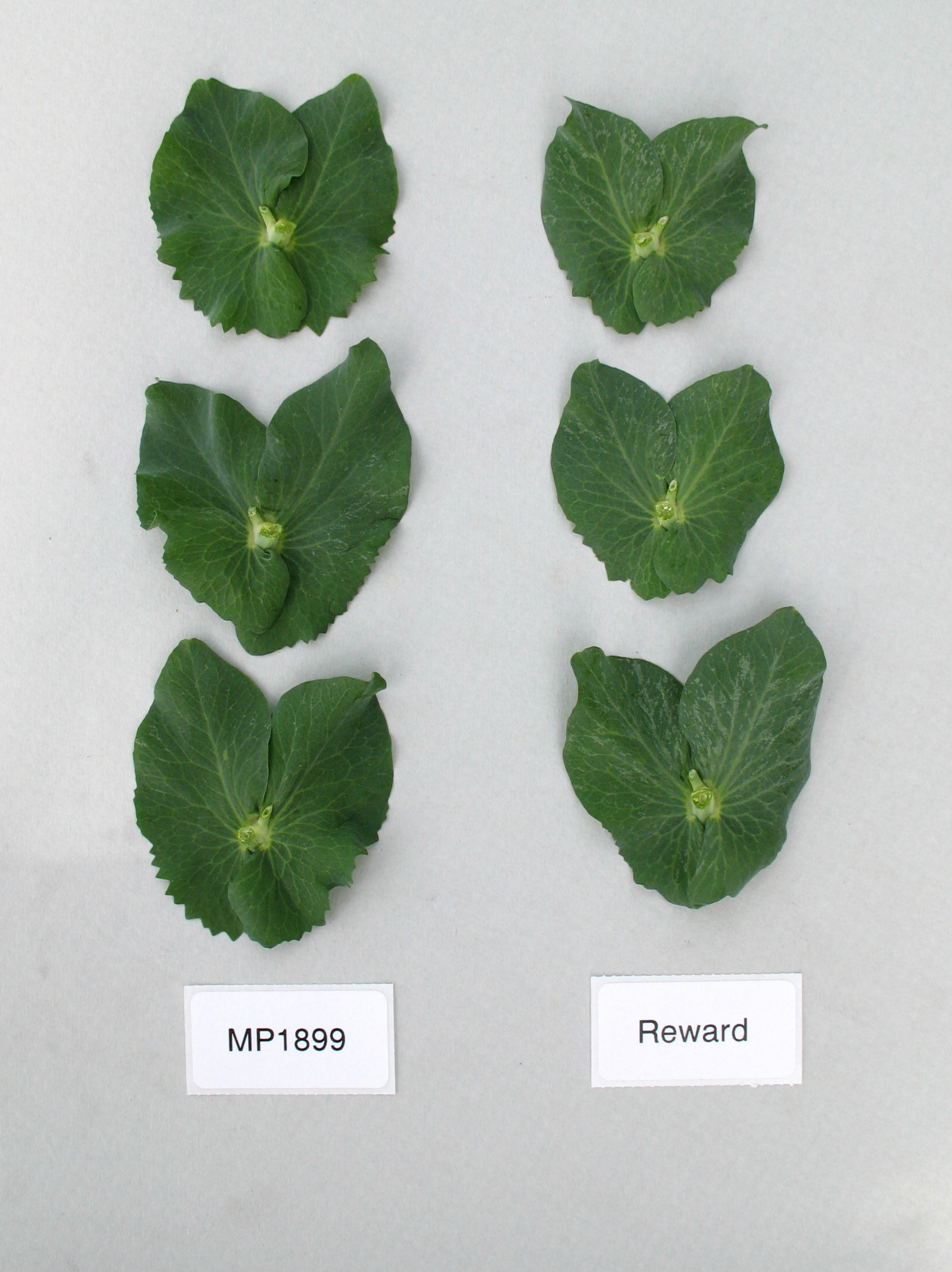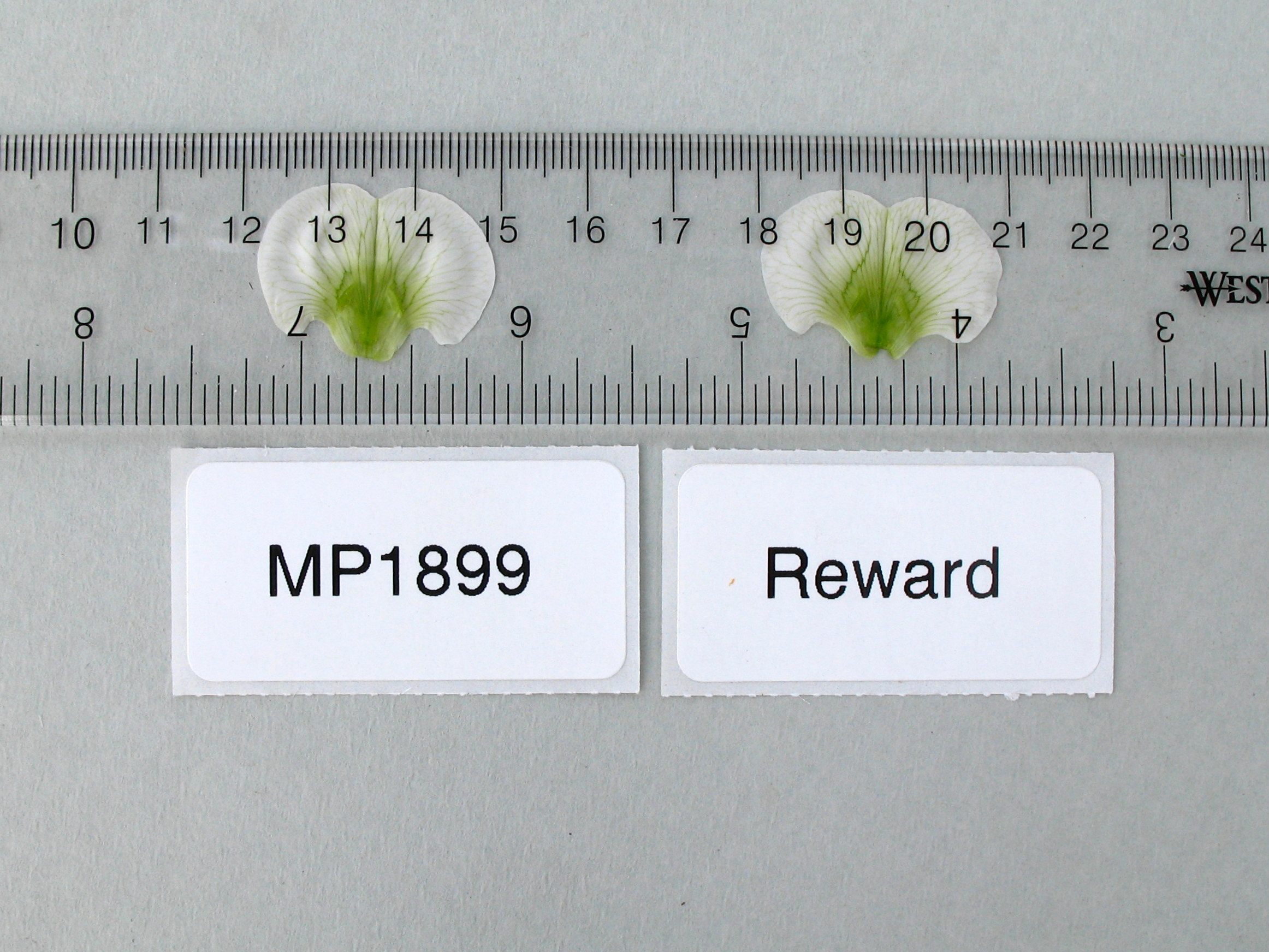AAC Lacombe
| Denomination: | 'AAC Lacombe' |
|---|---|
| Botanical Name: | Pisum sativum |
| Applicant/Holder: |
Agriculture & Agri-Food Canada, Lacombe Lacombe Research Station 6000 C and E trail Lacombe, Alberta T4L 1W1 Canada |
| Breeder: |
Deng-jin Bing, Agriculture & Agri-Food Canada, Lacombe, Alberta |
| Agent in Canada: |
Agriculture & Agri-Food Canada Office of Intellectual Property and Commercialization c/o Shannon Whyte 107 Science Place Saskatoon, Saskatchewan S7N 0X2 Canada Tel: (204) 999-9887 |
| Application Date: | 2013-04-26 |
| Application Number: | 13-8030 |
| Grant of Rights Date: | 2014-11-26 |
| Certificate Number: | 4955 |
| Grant of Rights Termination Date: | 2032-11-26 |
Variety Description
Varieties used for comparison: 'Reward' and 'AAC Barrhead'
Summary: The density of flecking of the stipules of 'AAC Lacombe' is sparse whereas the density is medium to dense on 'AAC Barrhead' and 'Reward'. 'AAC Lacombe' flowers later than 'AAC Barrhead'. The flower standard of 'AAC Lacombe' is wider than that of 'Reward' and 'AAC Barrhead'. The pods of 'AAC Lacombe' are longer than those of 'Reward'. The stem of 'AAC Lacombe' is longer than that of 'Reward' and 'AAC Barrhead'. 'AAC Lacombe' is later maturing than 'AAC Barrhead'.
Description:
PLANT: field type, no anthocyanin colouration, no stem fasciation, green colour at flowering, semi-leafless, late maturing
STEM: medium number of nodes up to and including first fertile node (ranging from 16 to 24 nodes with an average of 20)
STIPULE: sparse flecking
FLOWER: blooms late, three flowers per node, moderately arched to strongly arched, acute apex of upper sepal
POD: absent or partial parchment, thickened wall absent, very weak curvature, medium green when fully swollen, 8 ovules, suture strings absent
IMMATURE SEED: medium green
DRY SEED: cylindrical shape, simple starch grain, wrinkling of cotyledon absent, yellow cotyledon, hilum same colour as testa
Origin & Breeding History: 'AAC Lacombe' (experimental designation MP1899) is the result of the cross 'CDC715S-4' / 'Reward' made in 2003 in the greenhouse at the Agriculture and Agri-Food Canada Research Station in Morden, Manitoba. The breeding method was pedigree selection in combination with single seed descent. In 2007, one line, P0321-08, was selected for its high yield potential. In 2008, it was evaluated in a replicated yield test and selected for early maturity, lodging resistance, seed quality and high seed yield. In 2009, it was observed and purified in a seed increase strip planted in the field in Lacombe, Alberta. It was evaluated as MP1899 at various locations throughout western Canada in the 2010-2011 Western Canada Field Pea Cooperative Registration Test B.
Tests & Trials: Tests and trials were conducted during the summers of 2012 and 2013 in Lacombe, Alberta. Plots were arranged in a RCB design with 4 replicates. The plot size was 5 metres by 1 metre with a 20 cm row spacing. The seeding rate was 85 germinating seeds per square metre. Measured characteristics were based on 20 measurements per plant per year.
Comparison tables for 'AAC Lacombe' with reference varieties 'Reward' and 'AAC Barrhead'
Days to flowering
| 'AAC Lacombe' | 'Reward' | 'AAC Barrhead' | |
|---|---|---|---|
| mean | 59 | 59 | 57 |
Maximum width of flower standard (cm)
| 'AAC Lacombe' | 'Reward' | 'AAC Barrhead' | |
|---|---|---|---|
| mean | 3.0 | 2.8 | 2.6 |
| std. deviation | 0.2 | 0.4 | 0.3 |
Pod length (cm)
| 'AAC Lacombe' | 'Reward' | 'AAC Barrhead' | |
|---|---|---|---|
| mean | 7.8 | 7.0 | 7.5 |
| std. deviation | 0.8 | 0.5 | 0.6 |
Stem length (cm)
| 'AAC Lacombe' | 'Reward' | 'AAC Barrhead' | |
|---|---|---|---|
| mean | 136 | 118 | 123 |
| std. deviation | 11 | 17 | 10 |
Days to maturity
| 'AAC Lacombe' | 'Reward' | 'AAC Barrhead' | |
|---|---|---|---|
| mean | 105 | 105 | 103 |
Click on image for larger view

Pea: 'AAC Lacombe' (left) with reference variety 'Reward' (right)
Click on image for larger view

Pea: 'AAC Lacombe' (left) with reference variety 'Reward' (right)
- Date modified: